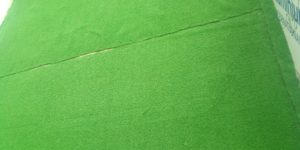Tips For Washing Artificial Grass: One of the benefits of installing synthetic turf is that it provides an even, level surface on which guests can walk and children can play. This means fewer tripping hazards than you will find with natural grass. One bad course of power washing can change this and leave you with a lumpy lawn. So while there might be some appealing benefits linked to pressure washing fake grass, it may not be worth the risk of losing or displacing your infill.

Tips for Pressure Washing Fake-grass
Power washing your lawn is probably the fastest and most effective way to clean up your fake lawn. But we do want you to be aware of the potential issues with your all-important infill(if you have one installed).
If you want to use this cleaning method, its best to get an experienced synthetic turf cleaner, who understands the importance of maintaining the integrity of the infill and will know how to clean the grass with minimal infill displacement.

But if you want to DIY, Here are some tips to help you achieve a satisfactory result:
- Concede the addition of distilled white vinegar to the pressure washer when cleaning the turf.
- Adding a little dish soap or other mild soap may help with cleaning tougher areas.
- Avoid harsh detergents and chemical cleaning solutions.
- Remove solid waste, such as dog waste, before pressure washing your lawn.
- Remove furniture and other objects from the area (remember that the water stream can strip paint and break glass).
- Do not point the stream of water directly at the ground, as this will displace infill.
- Keep the nozzle at least one foot away from the surface of your lawn.
- Maintain the spray at an angle to avoid damage and push the debris to the edge of your lawn for disposal.
- Use a wide-angle spray nozzle to finish the project faster and help avoid displacing infill.
- Using a wide-angle nozzle, spray your lawn in the opposite direction of the pile to fluff the glass.









